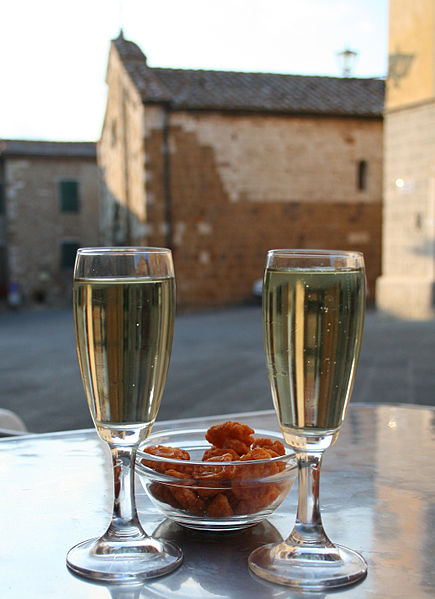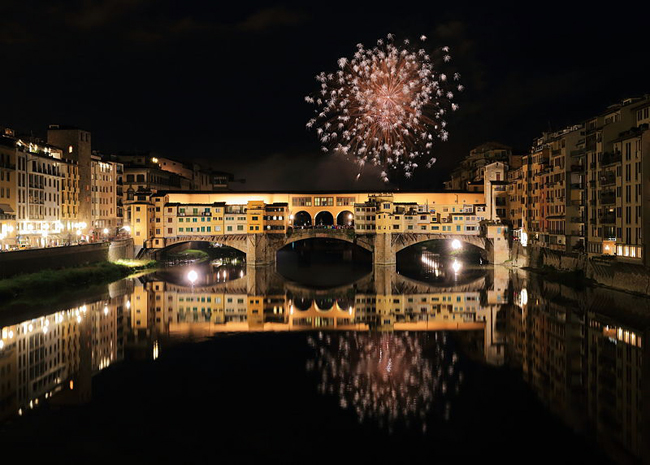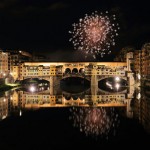
As with almost everywhere else in the world, New Year’s Eve is a major holiday in Italy, and is a time when families get together to welcome the new year. Unlike a lot of other countries, however, Italians refer to the occasion by its liturgical name, which is La Festa di San Silvestro, or the Feast of St. Sylvester.
For those who may not be familiar with him, St. Sylvester was a pope who lived in the fourth century, and is credited in stories and legend as the man who was able to convert Emperor Constantine to Christianity after curing him of leprosy. It was also under his papacy that many of Rome’s great churches were built, including the Basilica di Santa Croce, the Lateran Basilica, and the Old St. Peter’s Basilica, all said to be through the generous help of the grateful Constantine. St. Sylvester’s feast day falls on December 31 which is the day of his burial in the Catacombs of Priscilla in Rome.
During an Italian New Year celebration, beyond the usual fireworks and parties, other unique customs and traditions also abound on this day. These include the following:
Lucky Dishes for the New Year Eve’s Feast

Similar to many other cultures, the Italians also believe that it is important to have a table that is laden with auspicious food when the clock strikes midnight on New Year Eve. This follows the superstition that this will ensure that there will always be food on the table in the year ahead, and eating the lucky dishes will help bring good luck to the people at the feast.
First and foremost among these traditional Italian holiday dishes would be one made out of pork and lentils, known as cotechino e lenticchie. A cotechino is basically a large spiced pork sausage, and it is served on a bed of tasty boiled lentils, and perhaps with some polenta on the side. Sometimes, instead of cotechino, zampone is served instead, which is a stuffed pig’s trotter. The pork symbolizes abundance and the richness of life (think of fat,  happy pigs, and piggy banks, and the rich flavors of pork chops), while the round shape of the lentils represent coins and therefore signify wealth. Served together, the dish invites good fortune for the diners in the upcoming year.
happy pigs, and piggy banks, and the rich flavors of pork chops), while the round shape of the lentils represent coins and therefore signify wealth. Served together, the dish invites good fortune for the diners in the upcoming year.
Meanwhile, this practice is slightly different in some areas. For example, up north in Piedmont, the star of the traditional dinner rice is white risotto, or risotto in bianco, as the round shape of the grains of rice represents coins and are therefore believed to bring wealth and prosperity.
Sweet breads and cakes are also served at the New Year feast to signify sweetness and happiness in people’s lives, and for bringing in both happiness AND wealth, pig-shaped cookies are also a common sight at the table.
To wash it all down, spumante or prosecco, a type of Italian sparkling wine, is usually on hand and overflowing well until the sunrise when partygoers stop to watch the first sunrise of the new year.
Wearing Red Underwear

During New Year’s Eve, it is also common for Italians to put on red undies for good luck. The color is meant to invite good fortune and love, and it also represents fertility. If we are to strictly follow tradition, however, it is also required that these pieces of red underwear be thrown out the next morning in order for the ritual to be effective!
 Out With the Old…
Out With the Old…
An old tradition that is still practiced in some areas, especially in southern Italy, is that of disposing of your old belongings… by throwing them out the window. This practice is meant to symbolize the act of letting go of past misfortunes or unhappiness so that you can “have space” to accept happiness in the upcoming year. Though it is no longer a common practice, it still does happen, and it pays to be careful if you happen to walking under a window at around midnight. The first to go are usually old pots and pans, as well as old clothes, though it isn’t unheard of for some people to also throw out old appliances or even furniture, so watch out!
… and In with the New

When in Italy during the holidays, be aware that it is common practice for the Italians to wear new clothes and exchange gifts on the New Year. This is considered lucky, and items that are usually favored as presents include sweets, jars of honey, gold or silver items, money and coins, as well as lamps. The sweets and honey signify peace and the sweetness of life, precious metals and currency invoke prosperity, and lamps are thought to bring light (good fortune, happiness, wisdom, and so on) into one’s life for the next year. In some places such as Naples, however, this custom can differ slightly, and instead of the items mentioned, they use figs wrapped in bay leaves. This is an echo of an ancient Roman tradition of exchanging jars of figs and dates in honey, together with a bay branch, for good luck.
Driving Evil Spirits and Bad Luck Away… with Fire and Noise

Another old custom in Italy would be the breaking and smashing of plates, glasses, and other types of pottery or ceramics onto the ground in order to drive away and bad spirits or auras that may be attempting to ruin the new year for the household. This may sound like a violent confrontation if you’re not familiar with the practice, but don’t worry about it too much. If you hear glass and plates breaking on New Year ’s Eve, just make sure to check first that it isn’t part of the celebrations.
Yet another way to drive evil spirits away would be to take the Yule log, and light it on the last day of the year. Its flames are believed to scare away any malevolent spirit, and it is also a gesture of inviting the Virgin Mary into your home, where she can warm the infant Jesus near the fire. After the log has burned out, the ashes are then collected and used as charms to protect the home from various types of damage.

These are just a few of the New Year customs practiced in Italy. In the same manner as its language, weather, and food, however, every region, city, and town may have its own unique version, or maybe even completely different traditions altogether! So wherever you are, take the time to learn more about local practices, and enjoy this distinct experience!
In the meantime… BUON ANNO! 😀



















